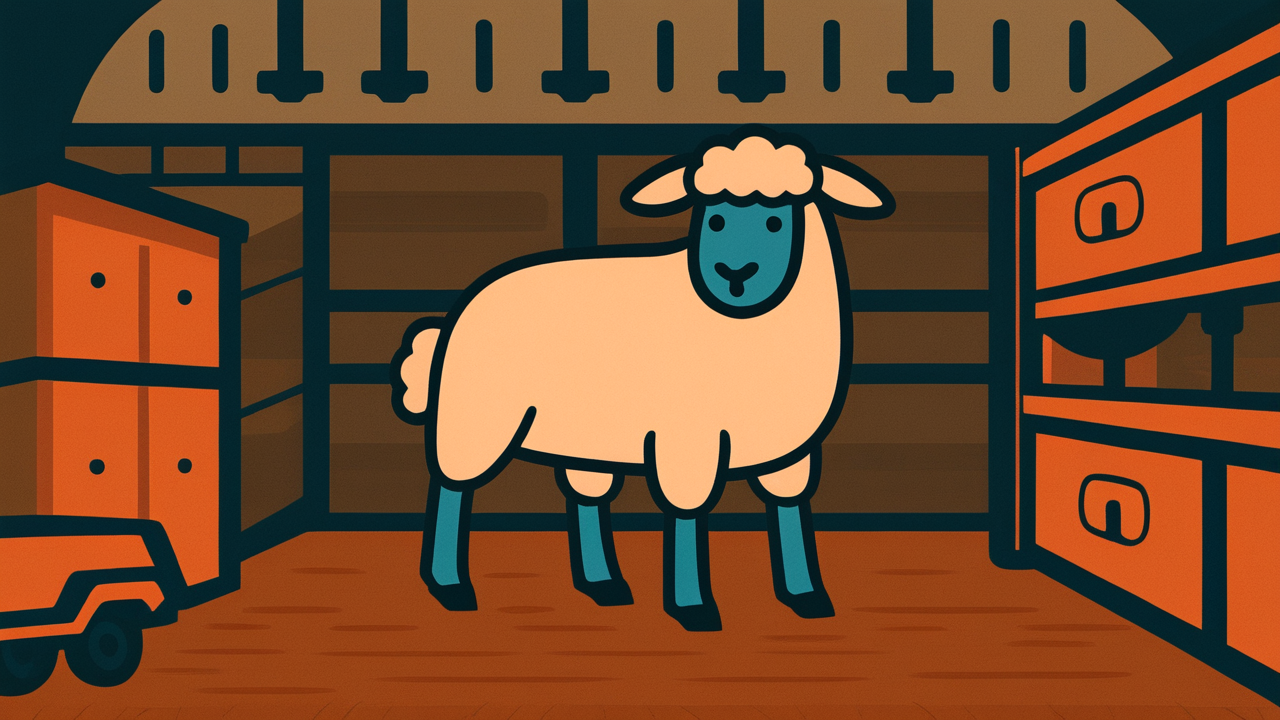How to Read “屠所の羊”
Tosho no hitsuji
Meaning of “屠所の羊”
“Slaughterhouse’s sheep” is a proverb that describes the state of being carefree and unaware of impending danger or disaster approaching oneself.
This expression, born from the image of sheep walking calmly toward a slaughterhouse without knowing their fate, accurately captures the state of people who don’t understand the seriousness of their situation. Since sheep have the habit of following the leader of their flock, they proceed without question even when heading toward dangerous places.
This proverb is mainly used in situations of warning or advice. It’s employed when someone is unaware of their situation but is objectively in clear danger, and those around them point out this lack of awareness. It’s also sometimes used to describe situations where people lose their judgment due to group psychology. Even in modern society, there are numerous instances where people overlook risks due to lack of information or mental stagnation, so the warning meaning of this expression remains fully relevant today.
Origin and Etymology
“Slaughterhouse’s sheep” is a proverb that originates from Chinese classical literature. “Slaughterhouse” refers to an abattoir, and this expression was born from observing the behavior of sheep being led there.
The origin of this proverb traces back to ancient Chinese literature. It’s thought that ancient people who observed the behavior of sheep heading to slaughter overlaid those characteristic behaviors onto human actions to create this expression. Sheep are known for their habit of moving in flocks and having a strong tendency to follow the lead sheep.
It was introduced to Japan along with the study of Chinese classics, and examples of its use can be found in Edo period literature. It was particularly used among Confucian scholars and was valued as a metaphor for expressing human behavior and psychology.
What’s interesting is that this expression didn’t simply arise from observing animal behavior, but is also deeply connected to ancient Chinese philosophical thought. It has been used for a long time as an important concept when contemplating human nature and group psychology. Even today, its essential meaning remains unchanged, and it continues to be passed down as an expression that provides sharp insights when we reflect on our actions.
Usage Examples
- Deciding to change jobs without knowing that company’s business situation is exactly like Slaughterhouse’s sheep
- People who jump at sweet deals without knowing about fraud tactics are like Slaughterhouse’s sheep
Modern Interpretation
In modern society, the situations that “Slaughterhouse’s sheep” represents may actually be increasing. With the advancement of the information age, we are surrounded by vast amounts of information, but at the same time, we live in an era where our ability to discern truly important information is being tested.
On social media and the internet, fake news and misleading information are rampant, and many people spread information without verifying its authenticity. This can truly be called a modern version of “Slaughterhouse’s sheep.” The fact that victims of investment fraud and malicious business practices continue to appear is also a manifestation of situations where people are deceived by sweet words and cannot see through the dangers.
On the other hand, modern society has come to emphasize more strongly the importance of individual judgment and critical thinking skills. In educational settings too, emphasis is placed on developing the ability to think and judge for oneself rather than simply accepting given information as is.
While technological advancement has given us access to more information, it has also increased our responsibility to discern the quality of that information. To avoid becoming “Slaughterhouse’s sheep,” it’s essential to develop the habit of always questioning, checking multiple information sources, and thinking with our own heads.
When AI Hears This
The reason sheep were chosen for the phrase “sheep to the slaughter” lies in how this animal’s unique behavioral traits align remarkably with Japanese attitudes toward life and death.
When sheep move in flocks, they have an instinct to unconditionally follow wherever the lead sheep goes. This is called “leader-following behavior,” and the entire flock will continue down the same path even when danger lies ahead. This characteristic perfectly mirrors the Japanese cultural value of “accepting fate without resistance.”
What’s fascinating is how sheep differ from other livestock. Cattle will resist violently when they sense danger, and pigs are highly intelligent with excellent situational awareness. But sheep continue walking quietly right up until their final moments at the slaughterhouse.
This “resigned obedience” of sheep perfectly captures what Japanese people consider the ideal way to face death. The samurai ideal of a “noble death” and the common people’s attitude of “accepting divine will” directly parallel the image of sheep walking toward the slaughter. Facing one’s end quietly without struggle, accepting fate—this represents the Japanese aesthetic ideal of a “beautiful death.”
In other words, “sheep to the slaughter” isn’t merely a metaphor. Sheep were chosen as the animal that could most accurately express Japanese views on life and death—making this phrase a product of cultural inevitability.
Lessons for Today
What “Slaughterhouse’s sheep” teaches us today is the importance of always viewing situations objectively. In our busy daily lives, we sometimes focus too much on what’s right in front of us and lose sight of the big picture.
This proverb teaches us the importance of developing the habit of stopping to think. Just because everyone around us is heading in the same direction doesn’t necessarily mean it’s the right path. Sometimes we need the courage to step back and ask ourselves, “Is this really okay?”
In modern society, the ability to question information has become as important as the ability to gather it. By developing the habit of looking at things from multiple perspectives and having our own judgment criteria, we can avoid becoming “Slaughterhouse’s sheep.”
Most importantly, we should use this proverb not to criticize others, but to reflect on ourselves. Everyone sometimes makes errors in judgment. What’s important is learning from those experiences and growing so we can make better choices next time.



Comments